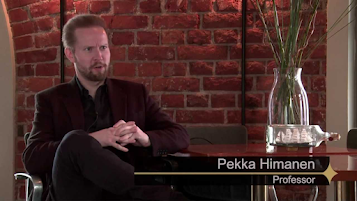Cyber Security in Azerbaijan (Week 10)
The cyber security in Azerbaijan… Usually, if you ask
this to the educated citizens of our country, they will reply to you by saying
that “It is really awful, and it is not getting any better in the near future”.
One of the biggest reasons why it is considered to be awful is the salary as I
mentioned in the previous week’s blog. The wages in government-related jobs are
really low so no well-educated security analyst would even try to work in such
companies. In the following paragraphs, I would like to further discuss this
topic by referring to the “Mitnick formula” and analyzing the overall security
in my country.
Security in Azerbaijan
Over the last few years, Azerbaijan has
confronted a lot of cyber-security-related threats and it has been growing
since then. For instance, let’s refer to the year 2019 from September to
January when 42 percent of the computer users in Azerbaijan have encountered
cyber-attacks who were mostly dealing with the distribution of malware to
various data storage devices such as hard drives and memory cards
For the sake of the training in such cyber occasions, the
president of Azerbaijan approved the “National Strategy for Information and
Communication Technologies for the Development of the Republic of Azerbaijan
(2014-2020)”
When we look at the legal basis of cybersecurity in
Azerbaijan, it can be said that it needs new enhancements as there have been
many occasions in which cyber weapons have tried to demolish the cyberinfrastructure
of Azerbaijan government
· Law
of the Republic of Azerbaijan on approval of Convention of Budapest “On
Cybercrime”
· Directive
(EU) 2016/1148 of the European Parliament and of the Council of 6 July 2016
concerning measures for a high common level of security of network and
information systems across the Union (NIS Directive)
· …
(the list goes on)
Conclusion
In conclusion, Azerbaijan has some gaps in the sphere of
cyber security and its development which requires maximum focus from the
government itself so that gap can be minimized. Besides this, I can also
proudly state that my country has also seen good advancement in the analysis of
cyber threats together with the progress in the area of ICT
References
|
[1] |
N. Spînu,
"Azerbaijan Cybersecurity Governance Assessment," 2020. |
|
[2] |
"Azərbaycan
Respublikasında informasiya cəmiyyətinin inkişafına dair 2014-2020-ci illər
üçün MİLLİ STRATEGİYA," 2 April 2014. [Online]. Available:
https://president.az/az/articles/view/11312. [Accessed 26 February 2022]. |
|
[3] |
"Law of the
Republic of Azerbaijan on approval of Convention “On Cybercrime”," 30
September 2009. [Online]. Available: https://mincom.gov.az/upload/files/9dd20fa1b4035d04117ea2e286a26bfc.pdf.
[Accessed 26 February 2022]. |
|
[4] |
"Directive
(EU) 2016/1148 of the European Parliament and of the Council of 6 July 2016
concerning measures for a high common level of security of network and
information systems across the Union (NIS Directive)," 6 July 2016.
[Online]. Available:
https://eur-lex.europa.eu/legal-content/EN/TXT/?uri=CELEX%3A32016L1148&qid=1609855280441.
[Accessed 26 February 2022]. |
.


Comments
Post a Comment